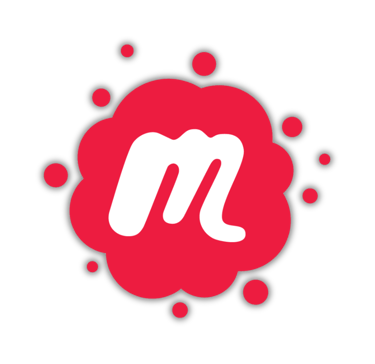How to Stay Focused When Working from Home: 15 Proven Strategies


How to Stay Focused When Working from Home: 15 Proven Strategies
As someone who struggles with ADHD, I know firsthand how challenging it can be to stay focused when working from home. The allure of the kitchen, the siren call of the PlayStation, and the puppy-dog eyes begging for an extra-long walk – these are just a few of the distractions that can derail our workday. But fear not, fellow focus-challenged friends! I've compiled 15 proven strategies that have helped me navigate the treacherous waters of home-based work. Let's dive in!
Table of Contents
Introduction: The ADHD Work-from-Home Challenge
When I first started working from home, I thought I'd hit the jackpot. No more commute, no more office distractions, just me and my work in the comfort of my own home. Oh, how naive I was! It turns out, my home is a veritable minefield of distractions, each one perfectly crafted to derail my ADHD brain.
There was the kitchen, constantly whispering promises of snacks. The PlayStation, tempting me with "just one quick game" of Rocket League between meetings (spoiler alert: it's never just one game). And let's not forget my furry co-worker, always ready for an extra-long walk on those beautiful days (though I can't feel too guilty about that one – it's good for both of us, right?).
But over time, through trial and error (and a lot of unfinished tasks), I've developed strategies that help me stay focused and productive. So, whether you're dealing with ADHD like me, or just finding it hard to concentrate in your home office, these 15 strategies will help you transform your work-from-home experience from chaotic to (mostly) controlled.
Strategy 1: Create a Dedicated Workspace
One of the biggest challenges I faced was the blurring of lines between work and home life. It's hard to focus on work when you're surrounded by home comforts and distractions. The solution? Create a dedicated workspace.
This doesn't mean you need a separate home office (though if you have one, that's great!). It could be a corner of your bedroom, a spot at the dining table, or even a converted closet. The key is to have a space that your brain associates with work.
My personal setup includes:
A desk facing away from distractions (goodbye, tempting view of the PlayStation!)
Noise-cancelling headphones to block out household sounds
A "Do Not Disturb" sign for when I'm in deep focus mode
Remember, your workspace doesn't have to be perfect. It just needs to be a place where you can consistently do your work.
Strategy 2: Establish a Routine
With ADHD, routines are our friends. They help reduce decision fatigue and create a sense of structure in our day. Here's a glimpse of my work-from-home routine:
Wake up at the same time every day (even if I want to hit snooze)
Morning walk with the dog (a great way to wake up and get some exercise)
Shower and get dressed (yes, out of pajamas!)
Eat breakfast and take medication
Start work at a consistent time
Having this routine helps signal to my brain that it's time to switch into work mode. It's not always easy to stick to, but on the days I do, I'm much more productive.
Strategy 3: Use the Pomodoro Technique
The Pomodoro Technique has been a game-changer for me. Here's how it works:
Choose a task
Set a timer for 25 minutes
Work on the task until the timer rings
Take a short 5-minute break
Every 4 "Pomodoros", take a longer 15-30 minute break
This technique works well with my ADHD brain because it breaks work into manageable chunks. Plus, knowing I have a break coming up helps me resist the urge to check my phone or raid the fridge.
Pro tip: During your 5-minute breaks, resist the urge to check social media or play a quick game. These activities can easily turn into time sucks. Instead, stretch, get a glass of water, or do a quick household chore.
Strategy 4: Implement Time-Blocking
Time-blocking is like Tetris for your calendar. You assign specific blocks of time for different tasks or types of work. For example:
9:00 AM - 10:30 AM: Respond to emails and plan the day
10:30 AM - 12:00 PM: Work on Project A
12:00 PM - 1:00 PM: Lunch and quick dog walk
1:00 PM - 2:30 PM: Meetings
2:30 PM - 4:00 PM: Work on Project B
4:00 PM - 5:00 PM: Administrative tasks and wrap-up
This strategy helps me stay on track and reduces the overwhelm of a long to-do list. Plus, it gives me permission to focus on one thing at a time, which is crucial for my ADHD brain.
Strategy 5: Utilize Noise-Cancelling Headphones
Noise-cancelling headphones are my secret weapon against auditory distractions. They help in two ways:
They block out household noises that might pull me out of focus.
I can use them to play focus-enhancing music or white noise.
I've found that instrumental music or nature sounds work best for me. Lyrics tend to hijack my attention, turning me into an impromptu karaoke star instead of a productive worker.
Strategy 6: Practice Mindfulness and Meditation
I know, I know. Sitting still and focusing on your breath sounds like torture for an ADHD brain. But hear me out – mindfulness and meditation can actually help improve focus and reduce anxiety.
Start small. Even just 5 minutes a day can make a difference. I use apps like Headspace or Calm, which have short guided meditations perfect for beginners.
Remember, the goal isn't to clear your mind completely (that's nearly impossible, especially for us!). It's about noticing when your mind wanders and gently bringing it back to the present. Think of it as a gym workout for your attention span.
Strategy 7: Use Visual Reminders
My ADHD brain loves visual cues. I use a combination of digital and physical reminders to keep me on track:
A large wall calendar for deadlines and important dates
Colorful sticky notes for urgent tasks
A digital task manager (I use Trello) for project planning
A small whiteboard for daily to-do lists
Having these visual reminders helps keep important tasks from getting lost in the shuffle of my busy mind.
Strategy 8: Gamify Your Work
Turn your work into a game! This strategy taps into the ADHD brain's love of novelty and rewards. Here are a few ways I do this:
Set a timer and try to beat my record for completing routine tasks
Use a habit-tracking app and try to maintain a "streak" of productive days
Reward myself with a quick game of Rocket League (timed, of course!) after completing a challenging task
The key is to make work feel more engaging and less like a chore.
Strategy 9: Take Structured Breaks
Remember those long walks with my dog I mentioned? They're actually a crucial part of my productivity strategy. Regular breaks are essential for maintaining focus, especially for those of us with ADHD.
The trick is to make these breaks structured and time-limited. I schedule them into my day just like any other task. This way, I can enjoy them without feeling guilty, and I'm less likely to let them stretch on indefinitely.
Some of my favorite structured breaks include:
15-minute dog walks
10-minute yoga or stretching sessions
5-minute dance parties to my favorite songs
These activities help me reset my focus and give me a boost of energy to tackle the next task.
Strategy 10: Use Technology to Block Distractions
Technology can be both a blessing and a curse for the ADHD brain. On one hand, it offers amazing tools for organization and productivity. On the other hand, it's a source of endless distraction (I'm looking at you, social media notifications!).
To combat this, I use apps and browser extensions to block distracting websites during work hours. Some of my favorites include:
Freedom: Blocks distracting websites across all devices
Forest: A fun app that grows virtual trees while you stay focused
StayFocusd: A Chrome extension that limits time on time-wasting websites
Remember, the goal isn't to punish yourself, but to create an environment that supports your focus.
Strategy 11: Incorporate Physical Activity
Regular exercise is crucial for managing ADHD symptoms and improving overall focus. But finding time for a workout can be challenging when working from home. Here's how I incorporate physical activity into my day:
Morning dog walks (as mentioned earlier)
Standing desk for part of the day
Mini exercise breaks (jumping jacks, push-ups, or yoga poses between tasks)
Evening bike rides or runs
Even short bursts of activity can help boost focus and energy levels.
Strategy 12: Optimize Your Environment
Your physical environment can have a big impact on your ability to focus. Here are some ways I've optimized my home office:
Good lighting (natural light when possible)
Comfortable temperature (I tend to focus better when it's slightly cool)
Minimal clutter (I declutter my desk at the end of each day)
Plants (they improve air quality and add a calming presence)
Fidget toys for restless hands
Experiment to find what works best for you. Remember, an environment that helps you focus is worth investing in.
Strategy 13: Communicate with Your Household
If you live with others, clear communication is key. I've had to have several conversations with my family about respecting work hours and minimizing interruptions. Some strategies that have worked for us include:
A visible "Do Not Disturb" sign when I'm in deep focus mode
Agreed-upon signals for when interruptions are okay
Scheduled times for household discussions and decisions
Remember, it's okay to set boundaries. Your work time is important.
Strategy 14: Use Body Doubling
Body doubling is a technique where you work alongside someone else, either in person or virtually. This can be incredibly helpful for those of us with ADHD. The presence of another person can help keep us accountable and focused.
In the work-from-home era, virtual body doubling has become popular. I often use:
Virtual coworking spaces
Video calls with colleagues where we work silently together
Accountability partners for check-ins
The key is to find a system that provides gentle accountability without adding stress.
Strategy 15: Celebrate Small Wins
Finally, don't forget to celebrate your successes, no matter how small they might seem. Completed a task without getting distracted? That's worth celebrating! Made it through a meeting without checking your phone? Give yourself a pat on the back!
Recognizing these small wins can help boost motivation and reinforce positive habits. I keep a "win jar" where I jot down my daily successes. On tough days, it's encouraging to look back and see how far I've come.
Conclusion: Embracing Your Unique Work Style
Working from home with ADHD presents unique challenges, but it also offers opportunities to create a work environment tailored to your needs. Remember, what works for others may not work for you, and that's okay. The key is to experiment, be patient with yourself, and keep refining your strategies.
Yes, there will still be days when the allure of the kitchen or the PlayStation is strong. There will be times when an extra-long dog walk seems more appealing than that looming deadline. But with these strategies in your toolkit, you'll be better equipped to navigate the distractions and find your focus.
Embrace your unique work style, celebrate your progress, and remember – you've got this!





